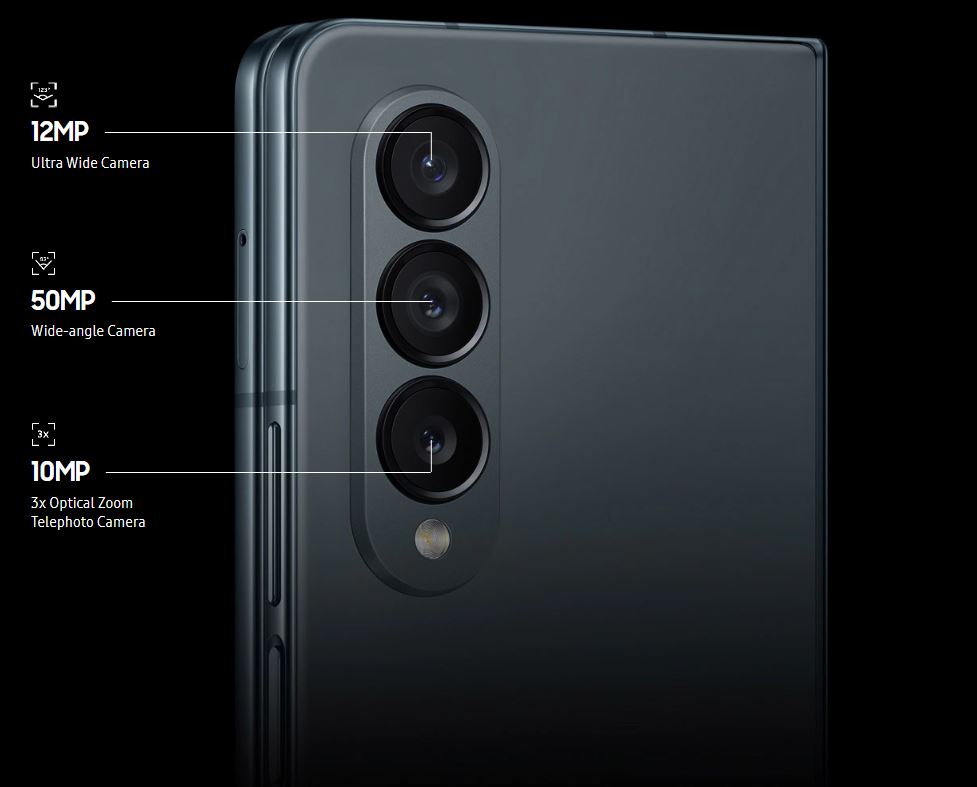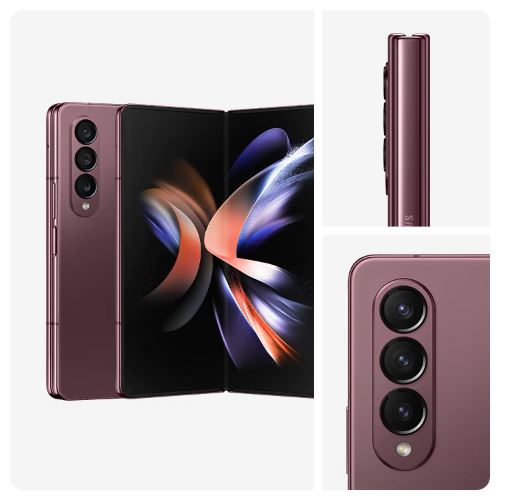Samsung’s Z Fold 4 vs. last year’s Z Fold 3: Should you upgrade?
Samsung revealed its latest Galaxy Z Fold 4 earlier today at its Unpacked flagship event, and it’s astonishing to see how similar it is to its predecessor.
While the Z Fold 4 does improve upon some aspects, it stagnates in others. MobileSyrup managing editor Patrick O’Rourke went hands-on with the device and said that the device seems to have hit a plateau when it comes to its design. “If you were expecting a Galaxy Fold 2 or, arguably, even a Fold 3-like design leap with the Fold 4, you will be disappointed with Samsung’s latest flagship foldable,” said O’Rourke in his hands-on.
However, without getting too ahead of ourselves, let’s compare both iterations of the devices and deduce whether the new Z Fold 4 is all hype or an actual upgrade over its predecessor.
7.6-inch QXGA+ Dynamic AMOLED 2X Infinity Flex, 2,208 x 1,768 pixels + 6.2-inch Dynamic AMOLED 2X, 2,268 x 832 pixels – 120Hz
Main Screen: 7.6 inches 120Hz AMOLED 2x, Infinity Flex Display (2176 x 1812) | Cover Screen: 6.2 inches 120Hz Dynamic AMOLED 2X Display (2316 x 904)
256GB, 512GB and 1TB of storage
Unfolded: 158.2 x 128.2 x 6.4 mm | Folded: 158.2. x 67.1 x 16 mm
Folded: 67.1 x 155.1 x 15.8mm(Hinge) ~ 14.2mm(Sagging) | Unfolded: 130.1 x 155.1 x 6.3mm
12-megapixel (wide, f/1.8) + 12-megapixel (Ultra wide, f/2.2) + 12-megapixel (telephoto, f/2.4)
50MP Wide-angle Camera F1.8, 12MP Ultra Wide Camera F2.2, 10MP Telephoto Camera F2.4 | Cover camera: 10MP Selfie Camera F2.2
10-megapixel (f/2.2) + 4-megapixel (f/1.8)
10 MP Cover Camera F/2.2 | 4MP Under Display Camera F1.8
Fingerprint sensor (side mounted), accelerometer, gyro, proximity sensor, compass, barometer
Capacitive Fingerprint sensor (side), Accelerometer, Barometer, Gyro sensor, Geomagnetic sensor, Hall sensor, Proximity sensor, Light sensor
Colours: Phantom Black, Phantom Green, Phantom Silver
Graygreen, Phantom Black, Beige [Samsung.com Exclusive] Burgundy
7.6-inch QXGA+ Dynamic AMOLED 2X Infinity Flex, 2,208 x 1,768 pixels + 6.2-inch Dynamic AMOLED 2X, 2,268 x 832 pixels – 120Hz
Main Screen: 7.6 inches 120Hz AMOLED 2x, Infinity Flex Display (2176 x 1812) | Cover Screen: 6.2 inches 120Hz Dynamic AMOLED 2X Display (2316 x 904)
256GB, 512GB and 1TB of storage
Unfolded: 158.2 x 128.2 x 6.4 mm | Folded: 158.2. x 67.1 x 16 mm
Folded: 67.1 x 155.1 x 15.8mm(Hinge) ~ 14.2mm(Sagging) | Unfolded: 130.1 x 155.1 x 6.3mm
12-megapixel (wide, f/1.8) + 12-megapixel (Ultra wide, f/2.2) + 12-megapixel (telephoto, f/2.4)
50MP Wide-angle Camera F1.8, 12MP Ultra Wide Camera F2.2, 10MP Telephoto Camera F2.4 | Cover camera: 10MP Selfie Camera F2.2
10-megapixel (f/2.2) + 4-megapixel (f/1.8)
10 MP Cover Camera F/2.2 | 4MP Under Display Camera F1.8
Fingerprint sensor (side mounted), accelerometer, gyro, proximity sensor, compass, barometer
Capacitive Fingerprint sensor (side), Accelerometer, Barometer, Gyro sensor, Geomagnetic sensor, Hall sensor, Proximity sensor, Light sensor
Colours: Phantom Black, Phantom Green, Phantom Silver
Graygreen, Phantom Black, Beige [Samsung.com Exclusive] Burgundy
Display and Design
The new foldable features a 7.6-inch unfolded QXGA+ Dynamic AMOLED 2X Infinity Flex display with a 120Hz adaptive refresh rate (48-120Hz), which happens to be exactly the same as its predecessor, although with a wider aspect ratio. It’s hard to tell the two displays apart at first glance, however, thanks to a slightly thinner and lighter redesigned hinge, the phone is 3mm wider.
It also features slightly muted bezels, and a 2176 x 1812 pixel resolution, making the overall display experience just a little bit better than its predecessor.
The cover display also features an identical-looking 120Hz 6.2-inch Dynamic AMOLED 2X display with a 2316 x 904-pixel resolution, slightly better than its predecessor’s 2,268 x 832 pixel resolution. Weight-wise, the new foldable is slightly lighter than its predecessor, coming in at 263g, 8g lighter than the Z Fold 3, which is likely due to the lighter hinge.
Regarding design, Samsung hasn’t been able to push the Fold 4 forward in any meaningful way.
Internals
The Z Fold 3 launched with Qualcomm’s Snapdragon 888 chipset, which happened to be the best processor at the time of the device’s release. The Fold 4 continues the tradition and features the best smartphone processor currently available — the Snapdragon 8+ Gen 1 chipset. The new chipset allows for 20 percent performance improvement and roughly 30 percent power saving compared to the Snapdragon 888.
In terms of battery life, Samsung decided not to upgrade the device’s battery, which means the Fold 4 has the same 4,400mAh battery as its predecessor, though Snapdragon 8+ Gen 1 optimizations should result in slightly better battery life.

The Z Fold 3 and Z Fold 4 both feature 12GB LPDDR5 RAM, alongside 256GB and512GB of storage options. The newer Fold 4, however, also comes in a 1TB storage model.
Camera
The camera is where the main upgrade is with the Fold 4. Samsung upgraded the smartphone’s main camera from 12-megapixel (wide, f/1.8) to 50-megapixel (wide, f/1.8). The Ultra-wide camera on the Z Fold 4 is identical to the Z fold 3, coming in at 12-megapixel (f/2.2).
The telephoto camera appears to have experienced a downgrade in megapixel terms, going from 12-megapixel (f/2.4) on the Z Fold 3 to 10-megapixel (f/2.4) on the Z Fold 4. However, with the new telephoto lens, you get 3x optical zoom, as compared to the Z Fold 3’s 2x optical zoom. Further, similar to the Fold 3, the Fold 4 also has two selfie cameras, one under the display alongside a punch-hole camera on the Cover screen. Unfortunately, the front cameras on the Fold 4 didn’t receive any updates, and are identical to its predecessor, coming in at 10-megapixel for the cover camera (f/2.2) and 4-megapixel for the under-display camera (f/1.8).
Further, similar to the Fold 3, the Fold 4 also has two selfie cameras, one under the display alongside a punch-hole camera on the Cover screen. Unfortunately, the front cameras on the Fold 4 didn’t receive any updates, and are identical to its predecessor, coming in at 10-megapixel for the cover camera (f/2.2) and 4-megapixel for the under-display camera (f/1.8).
Additionally, according to Samsung, the pixels above the under-display camera on the Fold 4 feature a higher density, which should mask the camera and disguise it. However, according to our hands-on with the device, the camera “is still obviously visible.”
Colours and pricing
The new Galaxy Z Fold 4 starts at $2,269, which happens to be the same price the Z Fold 3 launched for last year. The latter is now discounted, and is available for $1,894 on Samsung’s website.
The 2021 Fold, upon release, was available in ‘Phantom Black,’ ‘Phantom Green’ and ‘Phantom Silver’ colourways, whereas the new Fold is available in ‘Graygreen,’ Phantom Black,’ ‘Beige’ and the Samsung website-exclusive ‘Burgundy’ colourways.
![]() Worth the upgrade?
Worth the upgrade?
The Samsung Z Fold 4 features an impressively expansive display, which is just a little wider than its predecessor, and is powered by the best processor on the market. However, the device fails to introduce anything that is surprisingly new. It does have an upgraded main camera, a higher storage option, and a new Burgundy colourway that looks spectacular. And although those small improvements do add up, I don’t think they necessarily warrant an upgrade if you already own the Z Fold 3. An upgrade that would set you back $2,269.99.
On the other hand, if the Fold 4 would potentially be your first foldable purchase and you have the cash, definitely go for it. It is the best Samsung foldable on the market currently.
For more on the Z Fold 4, check out our hands-on with the smartphone.
Image credit: Samsung
For all the latest Technology News Click Here
For the latest news and updates, follow us on Google News.

 Worth the upgrade?
Worth the upgrade?